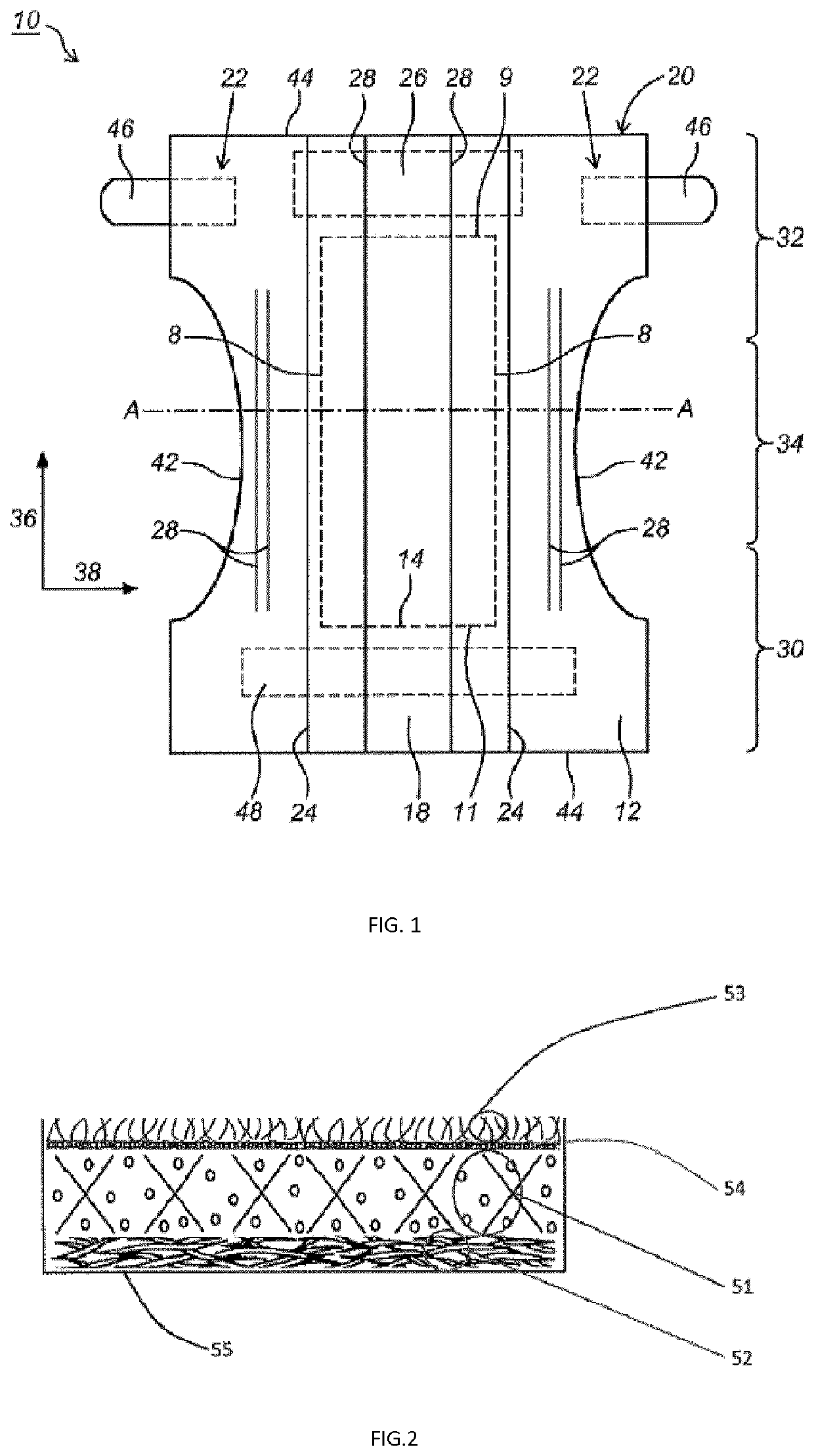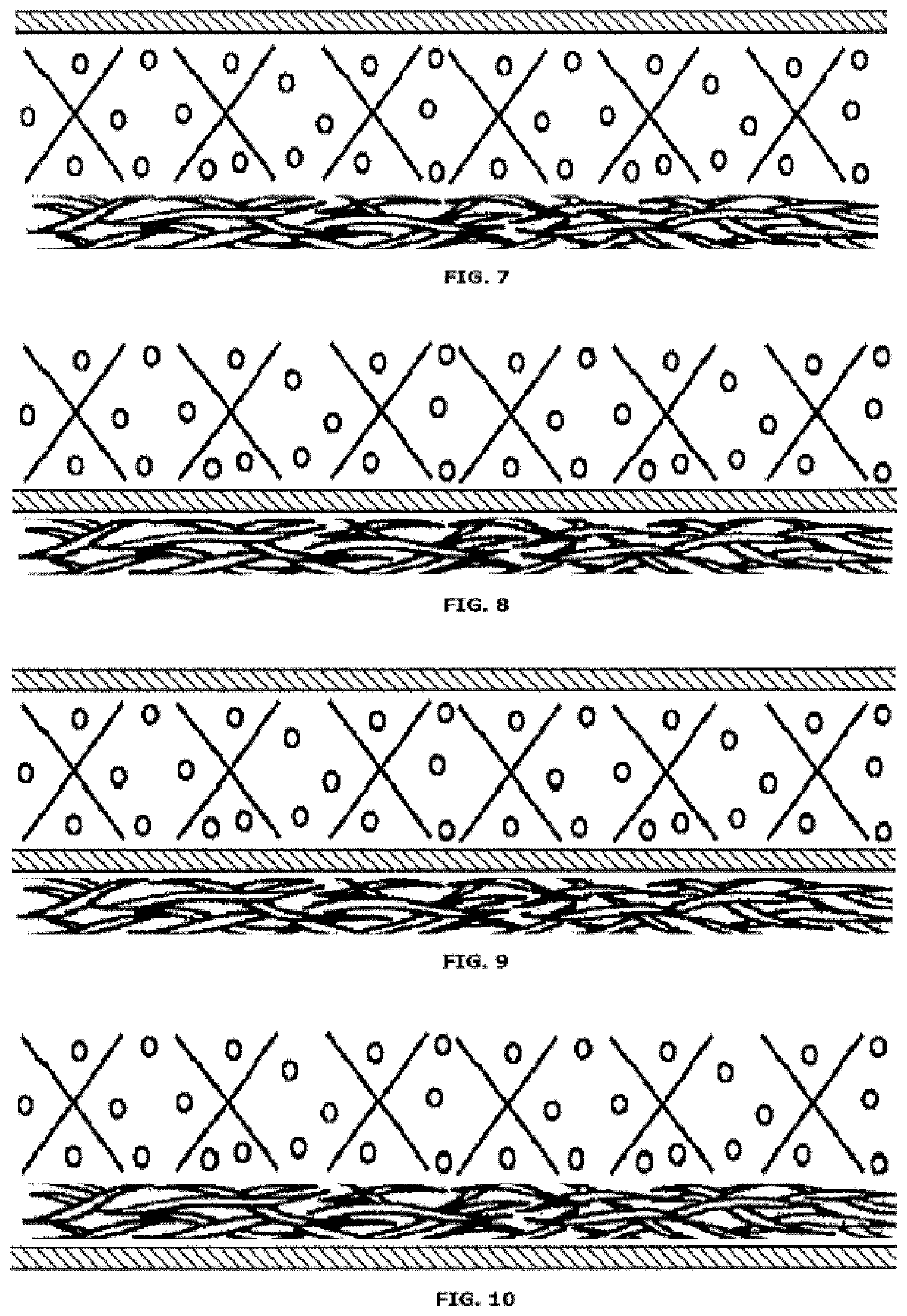Absorbent structure comprising release structure
a technology of absorbent articles and release structures, applied in the field of absorbent articles, can solve the problems of reducing the efficiency of the overall absorbent article, unable to reach the remaining absorbent, and reducing the overall wearing comfort of the user of the absorbent article, so as to achieve optimal use of the functional and structural capacities of the structur
- Summary
- Abstract
- Description
- Claims
- Application Information
AI Technical Summary
Benefits of technology
Problems solved by technology
Method used
Image
Examples
examples
[0222]An exemplary embodiment of the absorbent structure is illustrated in FIG. 2. From top to bottom, the structure comprises an acquisition layer (53), a dispersion layer (54), an absorbent core (51) with fibers and absorbent polymer materials, a release structure (52) and a wicking and edge barrier (55). The acquisition layer (53) and the dispersion layer (54) may be unitary or non-unitary with the absorbent core. Also the release structure (52) can be unitary or non-unitary with the absorbent core (51). Moreover, the release structure (52) may be unitary or non-unitary with the wicking and edge barrier (55).
[0223]Examples of such preferred and suitable release structures are for instance a super absorbent airlaid of 30-120 gsm, preferably 90-115 gsm, most preferably 95-110 gsm, a viscose of 40-125 gsm, preferably 95-120 gsm, most preferably 100-110 and / or 45 / 55 Viscose / PET layer of 50-135 gsm, preferably 105-130 gsm, most preferably 115-125 gsm.
[0224]An airlaid material of 60-1...
PUM
| Property | Measurement | Unit |
|---|---|---|
| Fraction | aaaaa | aaaaa |
| Fraction | aaaaa | aaaaa |
| Fraction | aaaaa | aaaaa |
Abstract
Description
Claims
Application Information
 Login to View More
Login to View More - R&D
- Intellectual Property
- Life Sciences
- Materials
- Tech Scout
- Unparalleled Data Quality
- Higher Quality Content
- 60% Fewer Hallucinations
Browse by: Latest US Patents, China's latest patents, Technical Efficacy Thesaurus, Application Domain, Technology Topic, Popular Technical Reports.
© 2025 PatSnap. All rights reserved.Legal|Privacy policy|Modern Slavery Act Transparency Statement|Sitemap|About US| Contact US: help@patsnap.com



